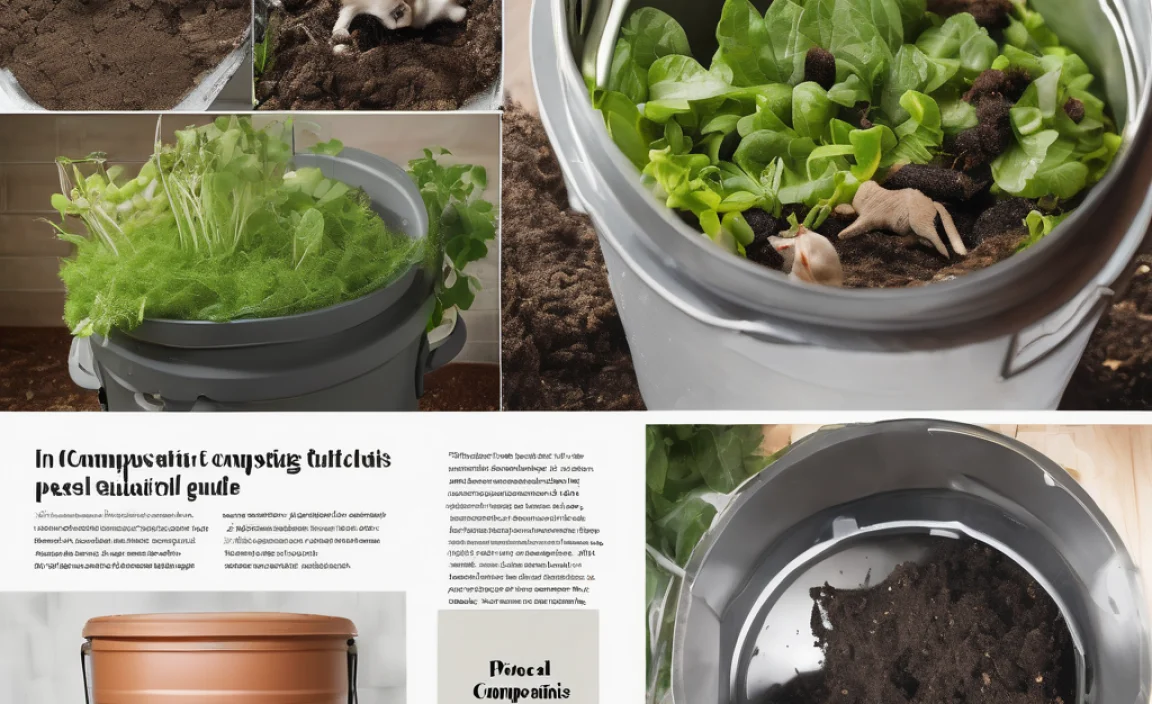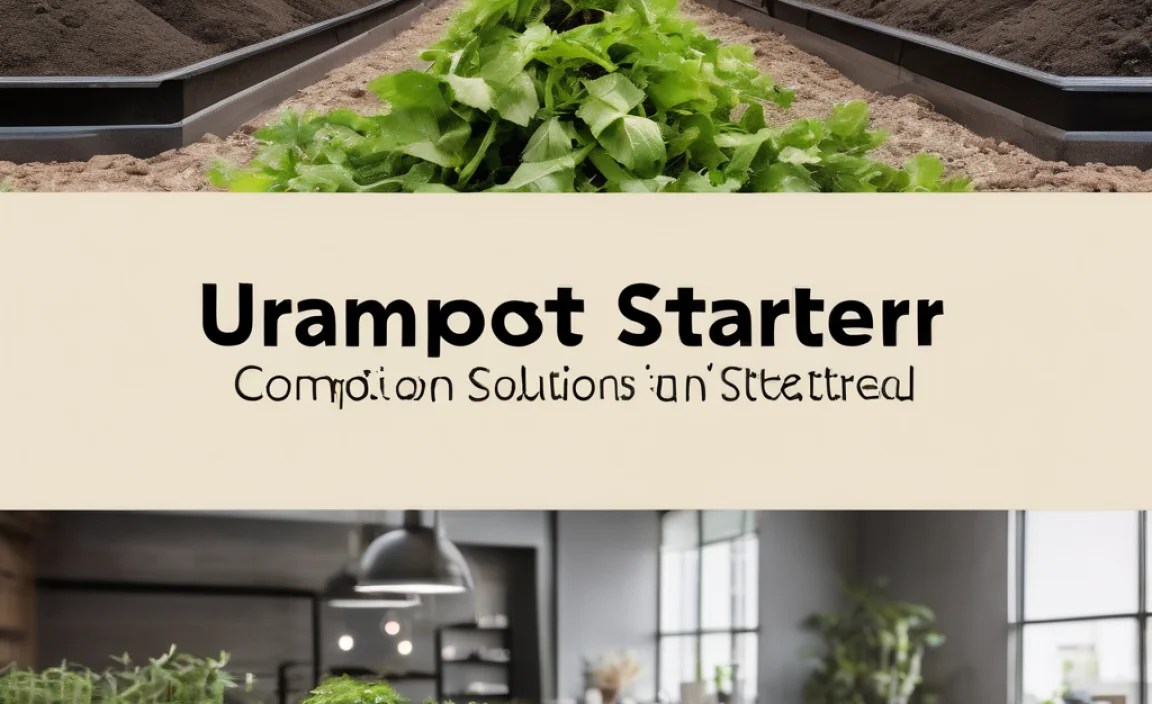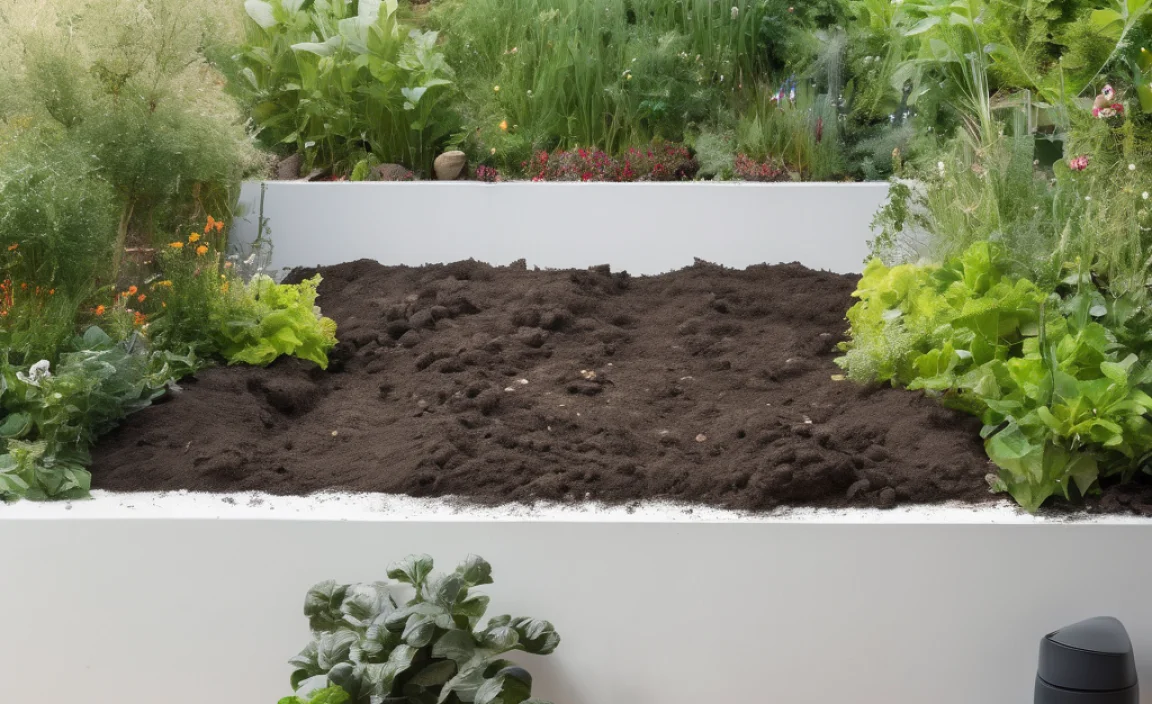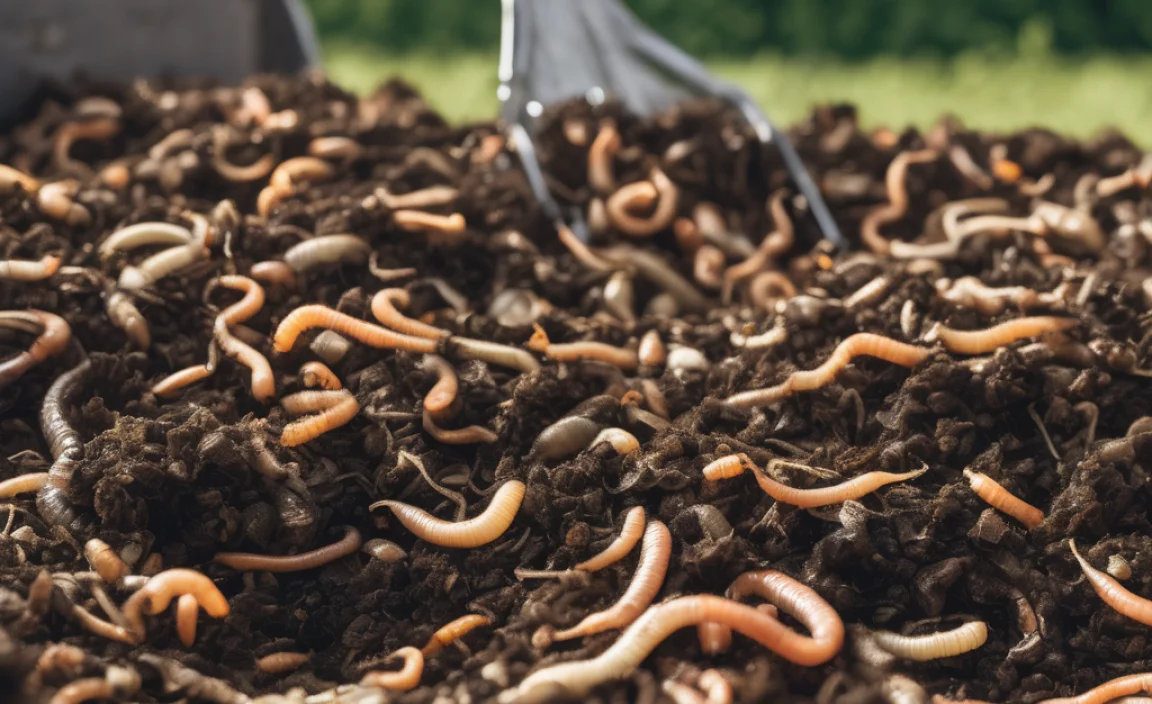Tired of that overflowing trash can or seeing perfectly good food scraps go to waste? Composting sounds great, but the thought of it being slow, smelly, or complicated can be a real turn-off. You want rich, black gold for your garden, but the idea of a messy bin and a long wait can feel like too much work. What if there was a way to speed things up and do it with minimal fuss?
There is! It’s called hot composting, and with the right system, it’s surprisingly easy. We’ll walk you through exactly what to look for when buying a hot composting system, so you can get started with confidence. Let’s transform your kitchen scraps and yard waste into garden riches, the fast and easy way!
What is Hot Composting and Why Should You Care?
Think of composting as nature’s recycling program. You toss in organic stuff like fruit peels, coffee grounds, and grass clippings, and over time, tiny microbes munch it all up and turn it into nutrient-rich soil amendment. Hot composting is just a faster, more active version of this process. Instead of waiting months, you can often have finished compost ready in weeks!
How does it get so hot? It’s all about balance. You need the right mix of “greens” (like food scraps, grass clippings – nitrogen-rich) and “browns” (like dried leaves, shredded paper – carbon-rich), plus enough air and moisture. When these elements come together in the right proportions, the beneficial microbes get busy, multiply, and create heat, often reaching temperatures between 130°F and 160°F (54°C to 71°C). This high heat is fantastic because it:
- Speeds up decomposition: The microbes work much faster at these temperatures.
- Kills weed seeds and pathogens: The heat helps to sterilize your compost, meaning fewer weeds pop up in your garden from the compost, and any harmful stuff gets neutralized.
- Reduces odors: A well-managed hot compost pile usually smells earthy, not rotten.
Why should you care? Because hot composting lets you:
- Reduce landfill waste: A significant portion of household waste is compostable. Keep it out of the dump!
- Create amazing fertilizer: Your garden will thank you with healthier, more vibrant plants.
- Save money: You won’t need to buy commercial fertilizers and soil conditioners.
- Get results quickly: Enjoy the benefits of your compost much sooner than with traditional methods.
Choosing the Right Hot Composting System: What to Look For
When you’re ready to buy a hot composting system, you’ll notice there are a few main types. Each has its pros and cons, and the “best” one for you depends on your space, your budget, and how much effort you want to put in.
Types of Hot Composting Systems
The most common systems designed for easier hot composting are tumblers and multi-chamber bins. Here’s a quick look:
1. Compost Tumblers
These are self-contained units, usually barrel-shaped and mounted on a frame so you can rotate them like a big hamster wheel. They’re great for containing everything, keeping pests out, and making turning the compost easy.
Pros:
- Easy to turn/aerate.
- Often pest-resistant.
- Neater appearance, good for smaller spaces.
- Faster batch composting – you add ingredients, seal it, turn it, and wait for a batch to finish.
Cons:
- Can be more expensive.
- Limited capacity per batch.
- Some can be tricky to empty when full.
- May require more effort to maintain ideal moisture and carbon-to-nitrogen ratios for fast hot composting.
2. Multi-Chamber Bins
These are usually sturdy bins with two or three sections. You add new material to one section, let it compost while you start a new batch in another, and move partly-composted material to a faster-composting finishing section. This continuous-flow system is ideal for hot composting.
Pros:
- Can handle larger volumes.
- Allows for continuous composting – always have a fresh batch starting and a finished batch ready.
- Better aeration and temperature control possible than single bins.
- Often more durable construction.
Cons:
- Require more space.
- Turning/moving material between chambers takes more physical effort.
- Can be more expensive than basic bins.
Key Features to Look For When You Buy:
No matter the type, consider these features to make your hot composting buy a great decision:
Material and Durability
You want something that will last. Look for sturdy, UV-resistant plastic (like high-density polyethylene – HDPE) for tumblers and bins. Metal frames are also a good sign. Avoid flimsy materials that will crack or degrade in the sun and weather.
Size and Capacity
How much kitchen and yard waste do you generate? A good rule of thumb for hot composting is to aim for a pile or bin that’s at least 3 feet x 3 feet x 3 feet (1 cubic yard or meter) for optimal heat retention if you’re building your own or choosing a free-standing bin. For tumblers, check the internal volume (often measured in gallons or liters). Think about how much you’ll be adding regularly.
Aeration (Airflow)
This is CRUCIAL for hot composting. Without oxygen, your compost will go anaerobic (stinky and slow). Tumblers usually have holes or vents. For bins, look for designs that allow air to circulate easily through the material. Some have built-in aeration tubes or clever vent designs.
Ease of Turning/Mixing
For tumblers, a good handle or easy-to-grip design is key. For multi-chamber bins, consider how easy it will be to shovel or fork material from one section to the next. If you have mobility issues, this is a big factor.
Ease of Adding Materials and Harvesting Compost
Does it have a wide opening to toss in scraps? Can you easily remove the finished compost from the bottom or side, or do you have to empty the entire bin? Some systems have clever sliding doors or pull-out trays for harvesting.
Pest Resistance
If critters are a concern in your area (raccoons, rodents), a fully enclosed tumbler is usually the best bet. Some well-designed bins also have finer mesh or other features to deter pests.
DIY vs. Buying: When Buying Is Better for Beginners
While you can certainly build a hot compost pile or bin yourself, buying a dedicated system often makes it much more foolproof for beginners. Why?
- Built-in Features: Purchased systems are designed with aeration, moisture retention, and ease of use in mind. You don’t have to guess if your DIY design is adequate.
- Speed: A good tumbler or multi-chamber system is engineered to facilitate the conditions needed for fast composting.
- Simplicity: They take the guesswork out of the equation. You can focus on learning the right mix of greens and browns.
Top-Rated Hot Composting Systems for Effortless Results
Based on user reviews and expert opinions, these types of systems tend to be popular for their ease of use and effectiveness in achieving hot composting. When you buy a hot composting system, looking at these brands or styles can be a good starting point.
| System Type | Best For… | Considerations |
|---|---|---|
| Single Batch Tumbler | Beginners, smaller households, quick compost batches. | Need to wait for one batch to finish before starting a new one; manageable size. |
| Dual Batch Tumbler | Continuous composting needs, slightly larger households. | Two chambers allow one to cure while the other active; can be larger/heavier. |
| Three-Bin System | Dedicated gardeners, larger yards, continuous high-volume composting. | Requires space; manual turning/moving between bins needs effort. |
| Worm Composters (Vermicomposting) | Apartment dwellers, small patios, food scraps only. | Not technically “hot” composting, but very efficient for kitchen waste. Requires specific bedding materials and management. |
When exploring options, look for reputable brands like:
- Tumbling Composter Brands: Many brands offer robust dual-chamber tumblers that are excellent for consistent hot composting. Look for well- reviews on ease of turning, durability, and efficient mixing. Examples include options from Sun Serious, Algreen Products, and Miracle-Gro.
- Stationary Bin Brands: For multi-chamber bins, consider brands known for sturdy construction that allows good airflow and easy access. Some are modular and can be expanded. Examples may include systems designed for higher temperatures like hot composters from Mantis or Gardener’s Supply Company.
Where to Buy Your System
Where you buy a hot composting system can also be important. You have a few good options:
- Online Retailers (Amazon, Home Depot, etc.): These offer a vast selection, competitive pricing, and customer reviews that can be incredibly helpful. You can compare models side-by-side easily.
- Garden Centers and Nurseries: If you prefer to see a compost bin in person, local garden stores are a great option. Staff can often offer advice tailored to your region.
- Manufacturer Websites: Buying directly from the manufacturer can sometimes offer extended warranties or special bundles.
- Second-hand Markets (Craigslist, Facebook Marketplace): You might find a great deal on a used system, but inspect it carefully for cracks or damage.
Getting Started with Your New System: The Basic Steps
Once your new hot composting system arrives, it’s time to get to work! Don’t worry, it’s much simpler than it sounds. The key is understanding the “recipe” – the right balance of greens and browns.
Step 1: Choose Your Location
Find a spot that’s convenient for you to access, gets some sun to help with heating (but not scorching hot all day), and has decent drainage. If you’re using a multi-bin system, you’ll want enough space to work around it.

I am passionate about home engineering. I specialize in designing, installing, and maintaining heating, ventilation, and air conditioning systems. My goal is to help people stay comfortable in their homes all year long.




